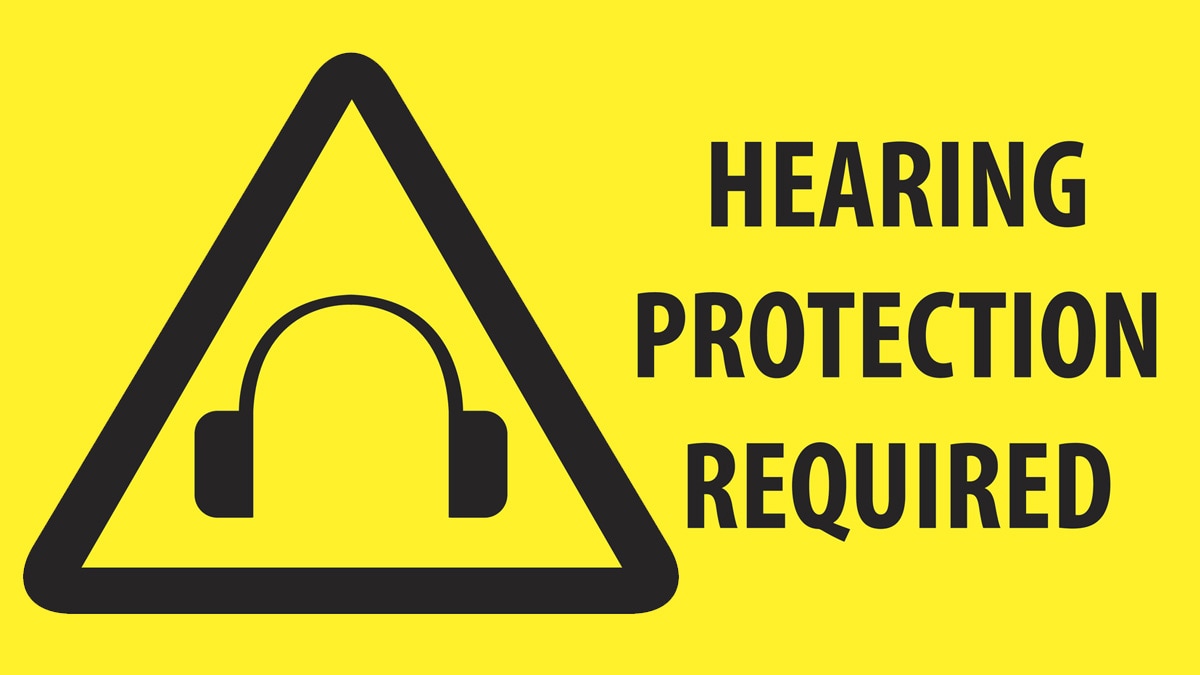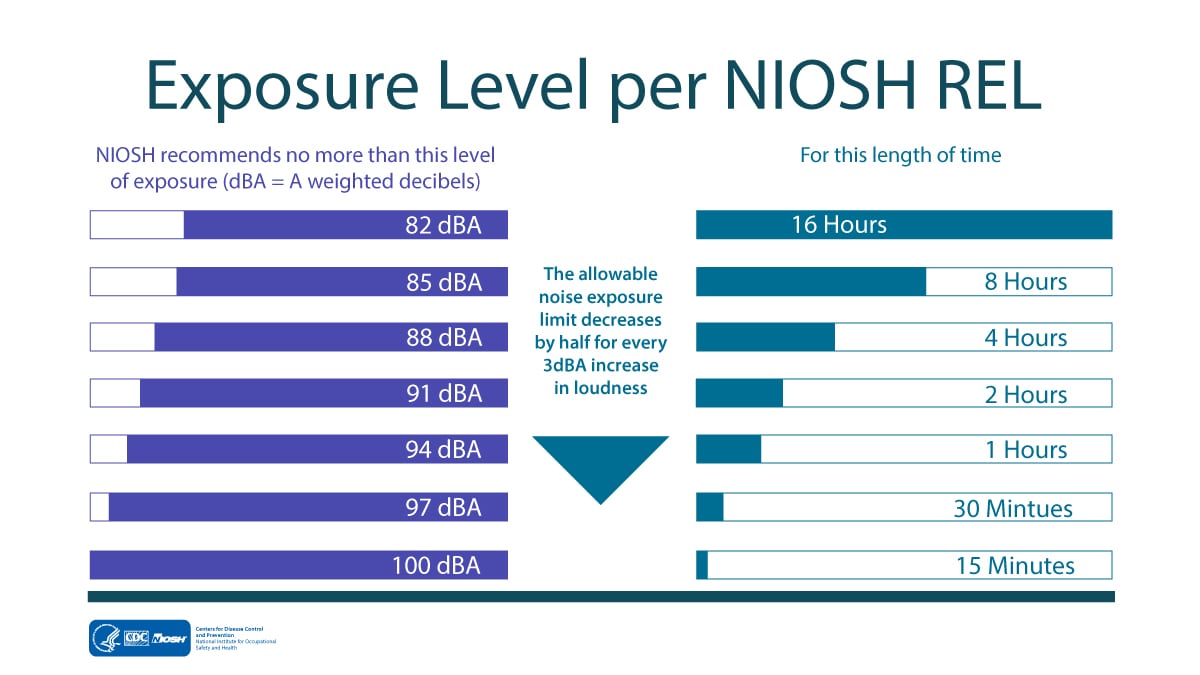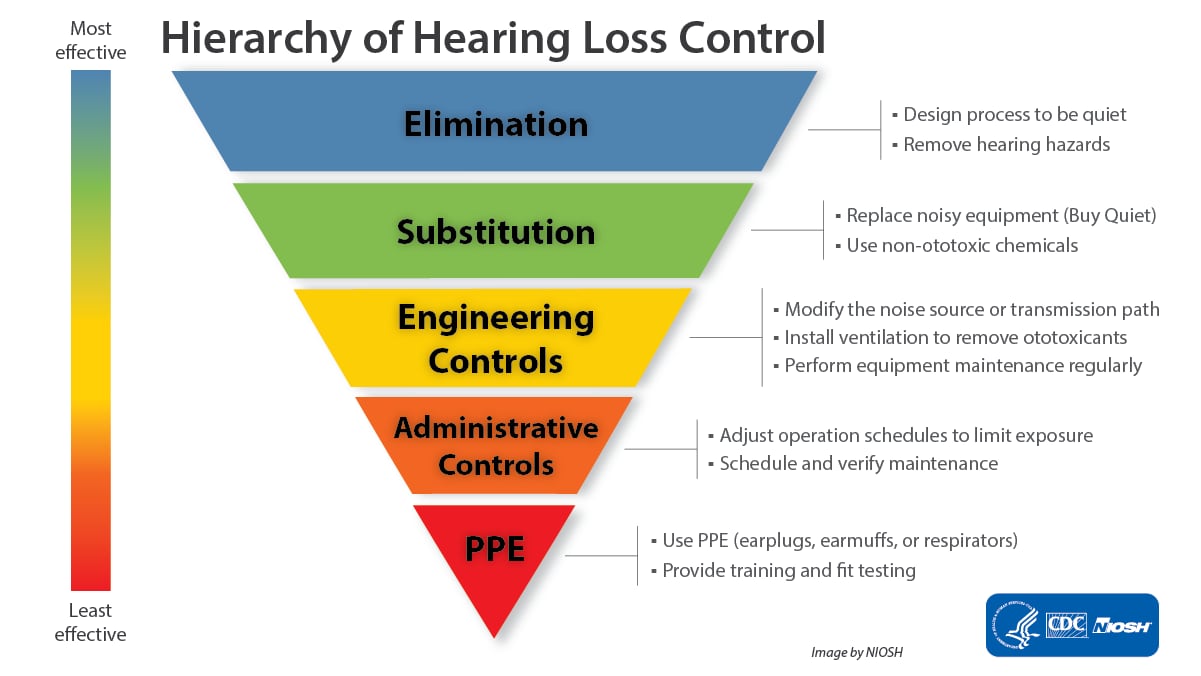Key points
- Loud noise at work can damage your hearing.
- NIOSH established a recommended exposure limit (REL) of 85 A-weighted decibels (dBA) averaged over an eight-hour workday.
- Noise exposure is a risk that is present in all industries.
- Employers, health and safety professionals, and workers can all take action to prevent hazardous noise exposure in the workplace.

Noise and hearing loss basics
Loud noise can damage your hearing.
Noise is considered hazardous based on:
- How loud the sound is
- How long the exposure lasts
- How often the exposure is repeated
Take precautions when noise is 85dBA or higher
NIOSH established a recommended exposure limit (REL) of 85 A-weighted decibels (dBA) averaged over an eight-hour workday. Workers who are exposed to noise at or above the NIOSH REL are at risk of developing significant hearing loss over their working lifetime. Although the NIOSH REL is based on exposure for eight hours, everyone differs in their susceptibility to noise.

How to tell if sounds are too loud
Use a sound level meter
You can check the noise level using a sound level meter.
Need to raise your voice at 85 dBA
Sounds that are 85 dBA often require you to raise your voice to be heard by someone 3 feet away. Equipment that can produce noise levels around 85-90 dBA include:
- Printing presses
- Lawn mowers
- Vacuums
- Power tools
Need to shout at 95 dBA
As noise reaches 95 dBA or more, you likely have to shout to be heard by someone 3 feet away. Exposures that average 95 dBA or higher include:
- Bulldozers
- Ambulance sirens
- Chain saws
- Bars/nightclubs
- Large sporting events
Other signs
Your ears ring or sounds seem dull or flat after leaving the noisy area.
You need to turn up the car radio or your phone volume at the end of your shift compared to before your shift. You may also notice the radio volume feels too loud when you get in your car the following day.
Industries at risk
Noise exposure is a risk that is present in all industries. Hazardous noise most commonly occurs in industries such as mining, manufacturing, and construction. But every industry has workers who are exposed to hazardous noise. For example, people working as janitors or administrative staff at noisy workplaces are also at risk for hearing loss.
Preventing hazardous noise exposure in the workplace
Employers, health and safety professionals, and workers can all take action to prevent hazardous noise exposure in the workplace. However, it is ultimately the employer's responsibility to provide a safe work environment.
Prevention steps for employers

The hierarchy of controls groups preventative actions by how well they may reduce or remove a hazard. You might need to use a combination of actions. Consider all potential exposures. For example, isolating the noise does not reduce ototoxic chemical exposures in the area.
Elimination: The most effective action is to remove the source of the noise.
Substitution: Use a quieter alternative, such as quieter equipment or tools.
Engineering Controls: Engineering controls remove hazardous conditions or place a barrier between the worker and the hazard. Controls can involve physical changes to the equipment or workplace. Examples include:
- Isolating the noise source in an insulated room or enclosure.
- Placing a barrier between the noise source and the worker.
- Isolating the worker from the noise source in a room or booth.
Administrative Controls: Administrative controls are work practices that reduce the duration, frequency, or level of exposure. Examples include:
- Scheduling loud work when fewer workers are around.
- Giving workers shifts doing quieter tasks and breaks from loud work.
- Providing quiet and convenient break areas.
Avoid administrative controls that expose more employees to noise.
Personal Protective Equipment (PPE): Provide workers with hearing protection devices when:
- Other approaches cannot reduce noise to a safe level.
- Noise levels exceed 85 dBA, regardless of how long the noise lasts.
Hearing protection can be effective when chosen correctly and used consistently.
Find innovative examples of hearing loss prevention: Safe-in-Sound Excellence in Hearing Loss Prevention Awards™
Prevention steps for workers
If you work in a noisy environment, take the following actions to help protect yourself:
- Try to take a break from the noisy activity.
- Reduce your time in noisy areas.
- Keep the volume low when listening to the radio or personal devices.
- Only listen to the radio or personal devices in non-noisy areas.
- Always wear hearing protection in noisy areas.
- Wear hearing protection correctly (follow manufacturer instructions).
Request assistance from NIOSH
You can request assistance from NIOSH. Management, unions, or workers can request a NIOSH Health Hazard Evaluation to learn whether hearing hazards are present in the workplace and get recommendations to reduce hazards and prevent occupational hearing loss. You can also contact CDC-INFO with questions or email the NIOSH hearing loss prevention team at NIOSHNoiseResearch@cdc.gov.
